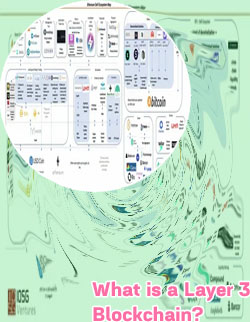Understanding Layer 1 Crypto: Exploring the Fundamentals
The Basics of Layer 1 Cryptocurrencies

Cryptocurrencies have been a hot topic in the financial world in recent years, with many investors jumping on the bandwagon to try and capitalize on the potential returns. However, before diving into the world of digital currencies, it is important to understand the basics of Layer 1 cryptocurrencies.
Layer 1 cryptocurrencies refer to the underlying blockchain platforms that support these digital assets. These platforms are decentralized and secure, utilizing a network of nodes to validate transactions and maintain the integrity of the network. Examples of Layer 1 cryptocurrencies include Bitcoin, Ethereum, and Cardano.
One of the key features of Layer 1 cryptocurrencies is their emphasis on security and decentralization. By utilizing a network of nodes to validate transactions, these platforms are able to eliminate the need for a third party to facilitate transactions, reducing the risk of fraud and censorship.
As a resident of a bustling city in World, such as Tokyo, Japan, I have seen firsthand the growing interest in cryptocurrencies. Many people are looking to diversify their investment portfolios and see digital assets as a viable option. However, it is important to do your research and understand the fundamentals of Layer 1 cryptocurrencies before investing your hard-earned money.
Key Features of Layer 1 Crypto Protocols
Layer 1 crypto protocols are foundational to the world of blockchain technology, providing the core infrastructure for decentralized systems. These protocols offer key features that are essential for the security, scalability, and efficiency of blockchain networks. Understanding these features is crucial for anyone looking to navigate the complex landscape of crypto protocols.
Here are some of the key features of layer 1 crypto protocols:
-
Consensus Mechanisms: Layer 1 protocols use consensus mechanisms to achieve agreement among nodes in a decentralized network. Popular mechanisms such as Proof of Work (PoW) and Proof of Stake (PoS) ensure that transactions are validated securely and efficiently.
-
Smart Contract Support: Many layer 1 protocols offer support for smart contracts, which are self-executing contracts with the terms of the agreement directly written into code. This feature enables the automation of complex processes and the creation of decentralized applications (dApps).
-
Security Enhancements: Layer 1 protocols implement various security features to protect the integrity of the blockchain network. These can include encryption techniques, multi-signature transactions, and advanced cryptographic algorithms.
-
Scalability Solutions: In order to support a large number of transactions, layer 1 protocols are exploring scalability solutions such as sharding, sidechains, and off-chain processing. These techniques aim
Comparing Popular Layer 1 Cryptocurrencies
In the world of cryptocurrency, several layer 1 protocols have emerged as frontrunners in terms of popularity and adoption. Among these, Ethereum stands out as a formidable player, offering a robust platform for decentralized applications (dApps) and smart contracts. Its native currency, Ether, is integral to the functioning of the network and has seen significant growth in value over the years.
Another contender in this space is Solana, a high-performance blockchain that boasts ultra-fast transaction speeds and low fees. Its native currency, SOL, has garnered attention for its scalability and ability to support a wide range of decentralized applications.
On the other hand, Cardano has positioned itself as a third-generation blockchain, focusing on sustainability, scalability, and interoperability. Its native currency, ADA, has gained traction among investors and developers alike for its innovative approach to decentralized finance (DeFi).
Each of these layer 1 protocols has its strengths and weaknesses, making it essential for investors and developers to carefully consider their unique features and use cases. As the cryptocurrency market continues to evolve, these platforms will undoubtedly play a pivotal role in shaping the future of decentralized finance.
The Role of Layer 1 in the Crypto Ecosystem
Layer 1 plays a crucial role in the crypto ecosystem as it serves as the foundation for the entire blockchain network. It is the underlying infrastructure that supports the decentralized nature of cryptocurrencies and enables secure and transparent transactions. The importance of Layer 1 cannot be overstated, as it directly influences the scalability, security, and decentralization of the blockchain network.
One of the key functions of Layer 1 is to handle the consensus mechanism of the blockchain. This ensures that all transactions on the network are verified and added to the ledger in a secure and trustless manner. Additionally, Layer 1 is responsible for storing the entire transaction history of the blockchain, maintaining the integrity of the network.
Another important aspect of Layer 1 is its role in facilitating smart contracts and decentralized applications (dApps). These applications rely on the underlying infrastructure provided by Layer 1 to execute code in a secure and decentralized manner.
In summary, Layer 1 is the backbone of the crypto ecosystem, providing the necessary infrastructure for the network to function efficiently and securely. Without Layer 1, the entire blockchain network would not be able to operate effectively.
Key points:
- Layer 1 serves as the foundation for the entire blockchain network.
- It handles the consensus mechanism of the blockchain.
- Layer
